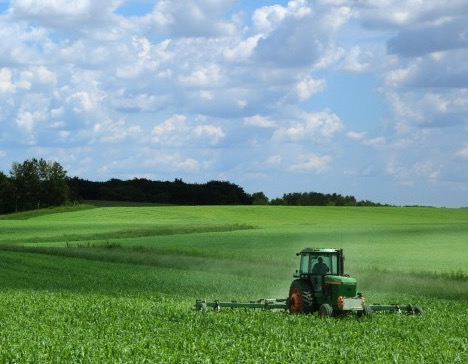There has been increased discussion about the presence of per and polyflouroaklyl substances (PFAS) in biosolids recently; including the February 22, 2025 article, Sludge laced with PFAS goes on Virginia’s farms. Fisherman fear the run-off., that was published by this paper. Nutrient-rich biosolids are a product of the wastewater treatment process. Biosolids are produced when the solids found in municipal wastewater undergo treatment to meet stringent permit limits so they can be beneficially used. Farmers choose to use biosolids because they are a sustainable source of nutrients that improve soil health, increase crop yields, and reduce the need for extra irrigation. In addition, using biosolids as a soil amendment has been found to sequester carbon, helping to mitigate climate change by storing carbon in soil. These are all important to the farmers in Virginia who choose biosolids. According to the Virginia Department of Environmental Quality, biosolids were used on only 36,000 acres in 2023 and preliminary data shows roughly the same for 2024. That’s less than 1 percent of Virginia’s farmland.
Compounds in the products that are made or used in our communities make their way into wastewater that is treated at local municipal treatment facilities. These compounds can come from local industries and households as we make and use different products. Traces of these chemicals can pass through wastewater treatment processes and make their way into the biosolids. PFAS pass through wastewater treatment because they were specifically designed to withstand extreme heat and chemical degradation. We are, essentially, “passive receivers” of waste streams.
Over the last few years, the wastewater community has been working to understand the impact of PFAS on our operations and identify potential solutions. One solution that has shown promise is identifying and reducing industrial sources of PFAS in our communities. Recent legislative actions in Virginia have set the stage for identifying and working collaboratively with these sources.
We have also been investing in research to evaluate new technologies that can remove or destroy PFAS during the treatment process. However, the installation and operations of these new technologies will be costly. Where new technologies have been implemented, communities have seen their rates increase – in some cases by as much as 16 times.
The design and implementation of new technologies is imperative, but we also must have help. There are few opportunities to fund this type of research.
When managing biosolids, the wastewater sector considers a range of options, including land application for farming and forestry, land reclamation, municipal landfills, recycling into compost, or incineration. PFAS is not an issue the wastewater community alone can address. The U.S. EPA is currently working on modeling the potential risks to the public for PFAS and has released a draft risk assessment for biosolids. Unfortunately, much of the critical research currently ongoing was not considered by EPA. Some of those important studies are occurring here in Virginia.
We are committed to working on the frontlines of protecting both the public and the environment. Policies should be based on science, not assumptions, and while we are eager for more conclusive findings, we acknowledge that the research is ongoing. For example, Michigan conducted an in-depth review of PFAS levels in wastewater and residuals before implementing a comprehensive regulatory program. Our municipalities have faced many challenges in the past, and we are confident that with science and thoughtful decision-making, we can find solutions that minimize the impact on our ratepayers while addressing this important societal issue.
There are many resources available for you to learn more, and we encourage you to explore reliable sources of information.
Sincerely,
Kendra Sveum
Vice President of the Virginia Biosolids Council
Kendra Sveum serves as the Vice President of the Virginia Biosolids Council, established to provide information and support research on biosolids. Its members include municipal wastewater facilities and biosolids recyclers and applicators.
Click HERE for PDF.
